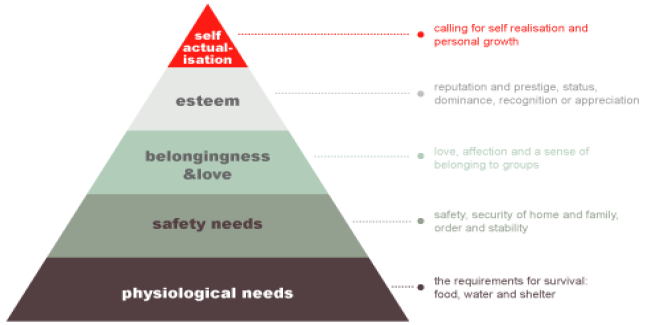Maslow’s Hierarchy of Needs, a staple of sociology and psychology courses, provides a useful framework for understanding how and why local products and brands are being selected and additionally how they can be extended beyond home country borders. Maslow hypothesized that people’s desires can be arranged into a hierarchy of five needs. As an individual fulfils needs at each level, he or she progresses to higher levels (see Figure 3.3). At the most basic level of human existence, physiological and safety needs must be met. People need food, clothing, and shelter, and a product that meets these basic needs has potential for introduction into a specific market. However, the basic human need to consume food and liquids is not the same thing as wanting or preferring a hamburger and a soft drink.
An additional consideration is that preferences are deeply embedded in local cultures. Responding to such differences has required the creation of products and brands for specific regional or country markets.
Mid-level needs in the hierarchy include self-respect, self-esteem, and the esteem of others. These social needs, which can create a powerful internal motivation, driving demand for status-oriented products, cut across the various stages of country development.
Luxury goods marketers are especially skilled at catering to esteem needs on a global basis. Some consumers flaunt their wealth by buying expensive products and brands that others will notice. Such behaviour is referred to as “conspicuous consumption” or “luxury badging”. Any company with a premium product or brand that has proven itself in a local market by fulfilling esteem needs should consider devising a strategy for taking the product global.

- 6698 reads






